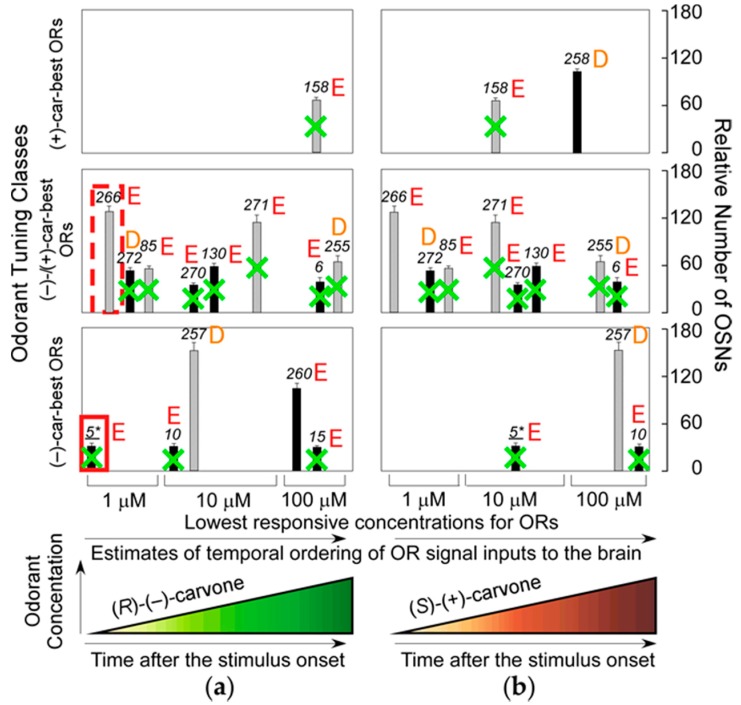Figure 5.
Estimated temporal ordering of input signals from carvone ORs to the brain in ΔD mice (modified from Reference [36] with permission for authors). (a) Temporally ordered signal inputs to the brain and the relative number of olfactory sensory neurons (OSNs) expressing the (R)-(−)-carvone-activated OR are shown. In wild-type mice (including dorsal ORs marked by green bold crosses), the most sensitive dorsal ORs enhance (R)-(−)-carvone-unique elemental odors in the brain by selective summation of cognate OR signals via synchronized inputs to the third-order neurons through feedforward inhibition driven by signals from the most sensitive helix-8-second-Glu dorsal ORs, one of which is enclosed by the red rectangle; (b) Temporally ordered signal inputs to the brain and the relative number of OSNs expressing the (S)-(+)-carvone-activated OR. In contrast, in ΔD mice lacking dorsal ORs, indicated by green bold crosses, these are the most sensitive common ORs, one of which is enclosed by the red broken-lined rectangle. These govern the prominent elemental odors in the brain. Numbers represent the identities of OR. Among the 15 identified carvone-ORs, 11 are helix-8-second-Glu ORs (marked by E) and four are helix-8-second-Asp ORs (marked by D). In each tuning class ((−)-car-best, (R)-(−)-carvone-best; (−)-/(+)-car-best, (R)-(−)-/(S)-(+)-carvone-best; (+)-car-best, (S)-(+)-carvone-best), the most sensitive ORs are all of the helix-8-second-Glu type. Input orders are based on the OR sensitivity and relative response amplitude. The number of in situ hybridized olfactory sensory neurons (indicated by the hatched bars) may be overestimated by potential cross-reactions with other ORs sharing >85% sequence homology.

